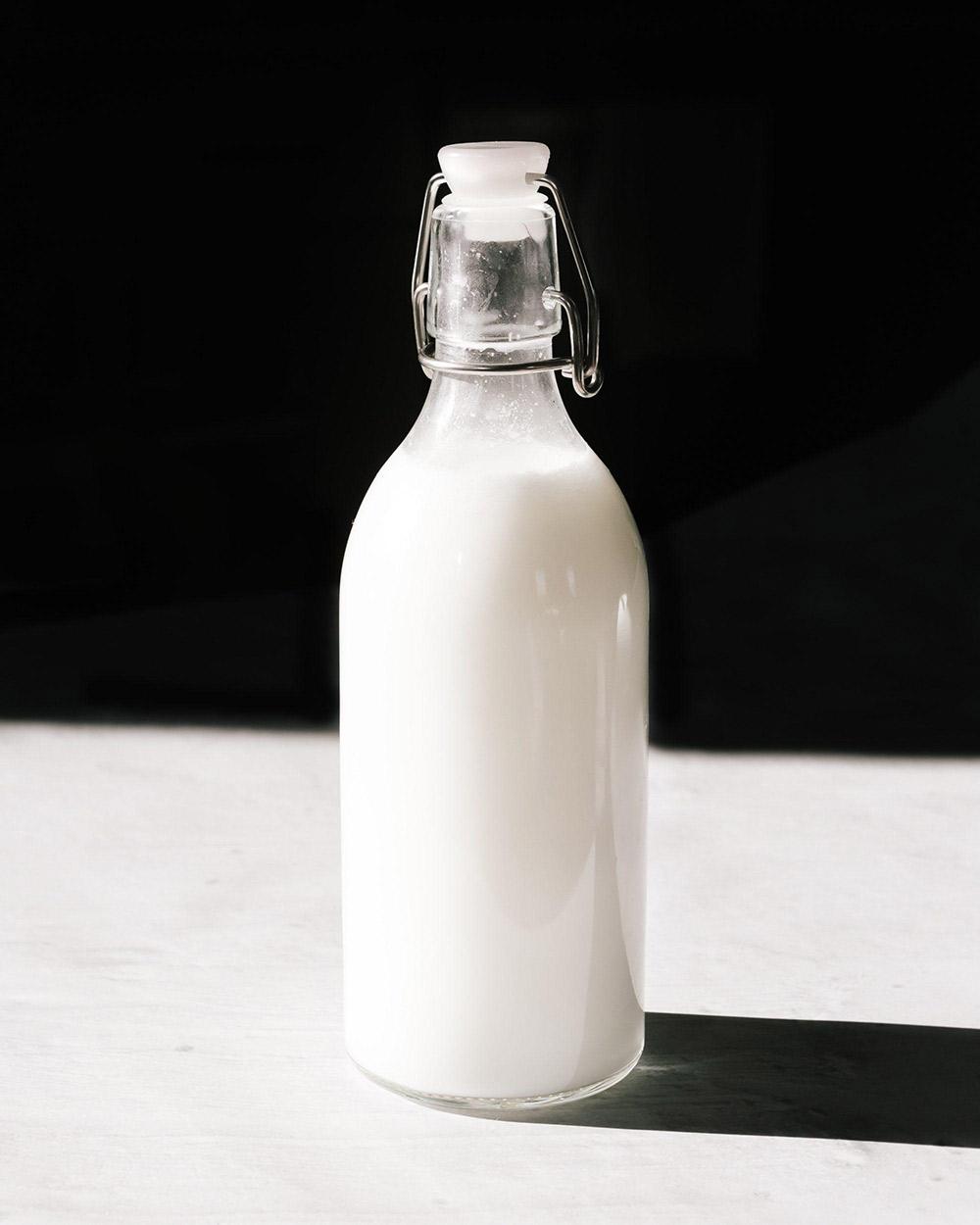Wondering what the deal is with dairy fat? We’re breaking down what you need to know about skim vs. whole milk dairy products.
We don’t blame you if you’re confused about dairy and its fat content. Depending on who you ask, dairy may be the cause of your breakouts or the key to bone health. The truth is that there’s no one-size-fits-all recommendation for dairy consumption. If it does work for your body, you’re probably wondering if dairy fat content matters? The answer is yes. Read on to find out why.
Low-Fat Dairy Basics
Skim, low-fat, and reduced-fat dairy have some or all of the fat that naturally occurs in cow’s milk removed. This is typically done by a centrifuge that separates and then removes fat globules from the milk. The percentage attached to low-fat dairy products (think 1% milk or 2% yogurt) describes the dairy fat content as a percentage of the total product by weight.
When fat was vilified in the 1980s and 90s, skim and reduced-fat dairy products became popular. The problem was that when manufacturers removed fat from products like yogurt, they had to find a way to make them still taste good. So, companies pumped flavored non-fat and low-fat yogurts with added sugar to make them taste more palatable. You’ll still find non-fat yogurts that serve up 22 grams of added sugar per 5-ounce serving on grocery shelves. That’s just shy of the maximum amount of added sugar women should have over the course of the whole day.
Low-Fat Dairy Nutrition Info
Low-fat dairy is associated with reduced satiety, altered female fertility, and decreased nutrient absorption. Additionally, low-fat dairy foods are significantly more processed than whole-milk dairy foods. More processing means more machinery, more energy—and more environmental damage. Thanks, but no thanks.
Let’s start with satiety, which is the degree to which you feel both full and satisfied by food. An 80-calorie cup of skim milk isn’t going to cut it if you’re pairing it with cereal and calling it breakfast. The lack of fat and low-calorie content is unlikely to hold you until lunch. As a result, you’ll either start snacking early or overeat at your next meal.
Choosing low-fat dairy products over whole milk alternatives may also cause fertility complications. According to the Nurses’ Health Study, women who consumed more than two portions of low-fat dairy daily were 85% more likely to experience ovulatory disorders and infertility compared to those who ate low-fat dairy less than once a week. On the other hand, women who ate whole milk dairy products at least once a day had a 25% lower risk of ovulatory issues and infertility compared to those who ate whole milk dairy just once a week.
Finally, there’s also the issue of decreased nutrient absorption from reduced-fat dairy products. Milk contains vitamins A and D, both of which are fat-soluble vitamins. Fat-soluble vitamins are better absorbed by the body when consumed along with fat. Most skim and low-fat milks are fortified with A and D. This means manufacturers add the nutrients back into the milk after they’ve been removed along with milk fat. The only problem is that with little to no fat left in milk, our chances of absorbing the vitamins are slim.
Of course, we’re not saying put heavy cream in your coffee and eat cheese all day every day. Plus, if you struggle with high cholesterol, the saturated fat in whole milk dairy may be a problem, since saturated fat found in animal products can worsen “bad” LDL cholesterol levels in the blood. If you have high cholesterol or are at risk of cardiovascular disease, we recommend working with a Culina Health registered dietitian to determine what type of dairy (and how much) is right for you.
For healthy adults who tolerate and enjoy dairy, there’s no need to limit intake to watery skim milk. Instead, we recommend a moderate amount of whole milk dairy products (especially yogurt, which also offers up gut-friendly probiotics!) as part of a well-balanced, plant-rich diet.
Whole Milk Dairy Basics
Whole milk dairy in its most natural form is basically Mother Nature’s finest work. After all, whole milk (which is about 3.5% fat) serves up a perfect balance of all three macronutrients: protein, fat, carbs,
Whole milk dairy nutrition
Dairy of any kind can be a no-no for people with autoimmune diseases or sensitivities to lactose, casein, or whey. However, if you’re someone who tolerates dairy well, we’re all for adding it to your diet in moderation—even if you’re trying to lose weight.
Choosing whole milk dairy over skim alternatives may actually help you hit your goal weight. It goes back to that satiety factor we mentioned earlier. A bowl of whole milk yogurt can provide about 50% more energy than a bowl of nonfat yogurt. As a result, it’s more likely to fill you up for longer (not to mention satisfy you more), reducing your risk of grazing between meals and consuming excess calories.
According to a meta-analysis published in The European Journal of Nutrition in 2012, high-fat dairy consumption may be inversely correlated to obesity risk. There’s also interesting research on the link between dairy fat consumption and type 2 diabetes risk. For example, one 2016 study published in the journal Circulation reported that study participants who presented with higher blood levels of fatty acids from dairy were significantly less likely to be diagnosed with type 2 diabetes over time.
These studies are observational – meaning we can’t draw cause-and-effect conclusions from them. However, they still provide fascinating insights into the potential link between dairy fat and metabolic health outcomes.
The Bottom Line
Dairy isn’t going to make or break your health, so don’t worry if you currently choose to exclude it from your diet. If you do tolerate dairy well, we recommend eating whole-milk dairy products in moderation. Bonus points if you’re able to swing organic and grass-fed milk and yogurt, which are antibiotic-free and higher in essential nutrients like omega-3 fatty acids. Opting for dairy with a higher fat content can also aid in vitamin D absorption, curb appetite, and support fertility in women. That said, everybody is different. Therefore, the saturated fat found in whole milk dairy may be problematic for individuals with or at risk of cardiovascular disease. We recommend working with a Culina Health RD to figure out the best dairy fat content for your diet.
Want more nutrition tips? Schedule a session with one of our registered dietitians to learn more.






